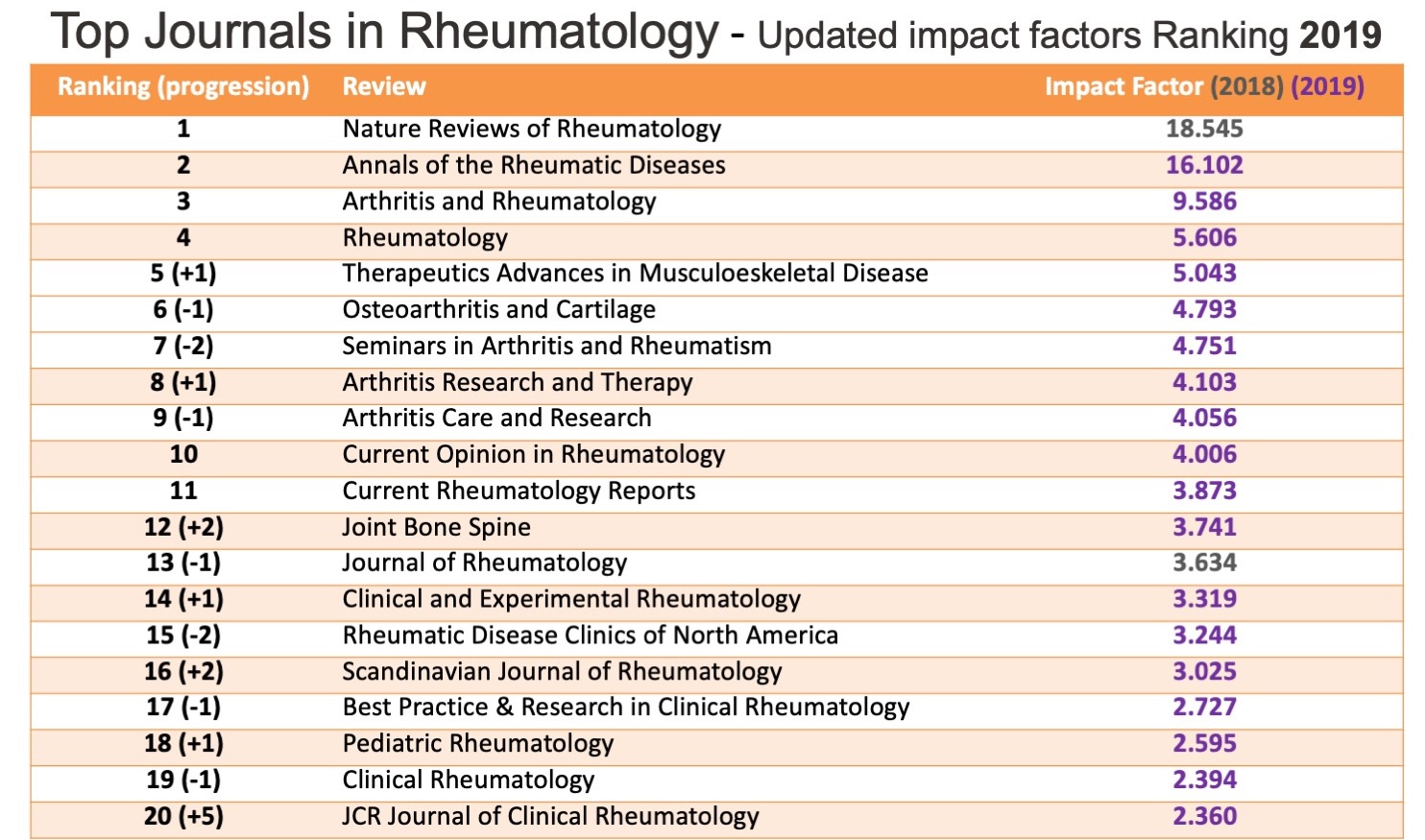Three rheumatology journals stand out above the crowd when it comes to impact factors, according to the latest figures released in the Journal Citation Reports.
Nature Reviews of Rheumatology tops the list of rheumatology journals in terms of numbers of citations of articles by other peer-reviewed journals, with an impact factor of 16.625, according to the figures released by Clarivate.
 There were no changes in the overall rankings for 2019, although the leading journal dropped its score from a previous figure of 18.545.
There were no changes in the overall rankings for 2019, although the leading journal dropped its score from a previous figure of 18.545.
The other two journals in the top 3 were EULAR’s Annals of the Rheumatic Diseases (impact factor 16.102) and Arthritis and Rheumatology (9.586), the official journal of the American College of Rheumatology, with all other journals having an impact factor score of about half or less than the leading three journals.
The rankings were summarised in a table published on Twitter by French rheumatologist Dr Renaud Felten of Strasbourg.
However some rheumatology journal rankings not included on his rankings included Lupus (2.25) and the updated impact factor for the Journal of Rheumatology (3.35).
By way of comparison, the highest impact factors were seen for general medical journals such as the NEJM (74.699), The Lancet (60.392) and JAMA (45.540). The Medical Journal of Australia had an impact factor of 6.112, up from 3.369 since 2015.
According to Clarivate, the annual JCR impact factor is a ratio between citations and recent citable items published. Thus, the impact factor of a journal is calculated by dividing the number of current year citations to the source items published in that journal during the previous two years.